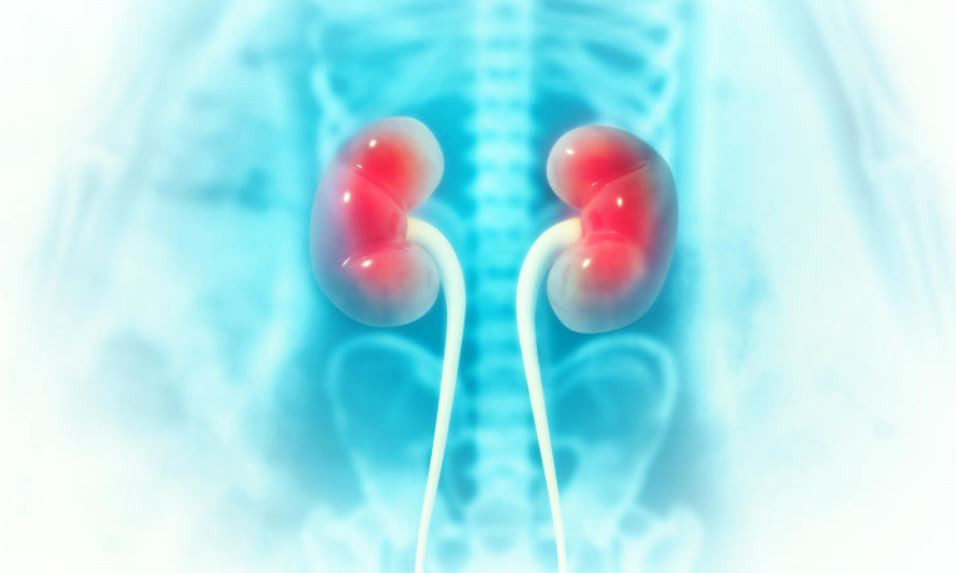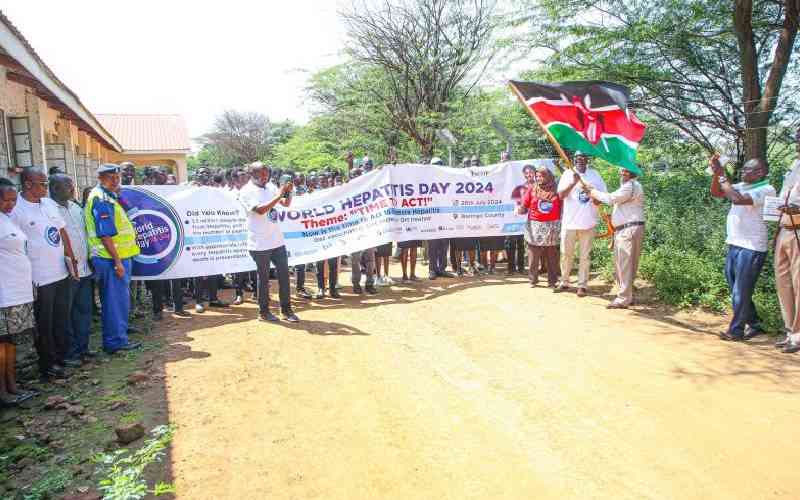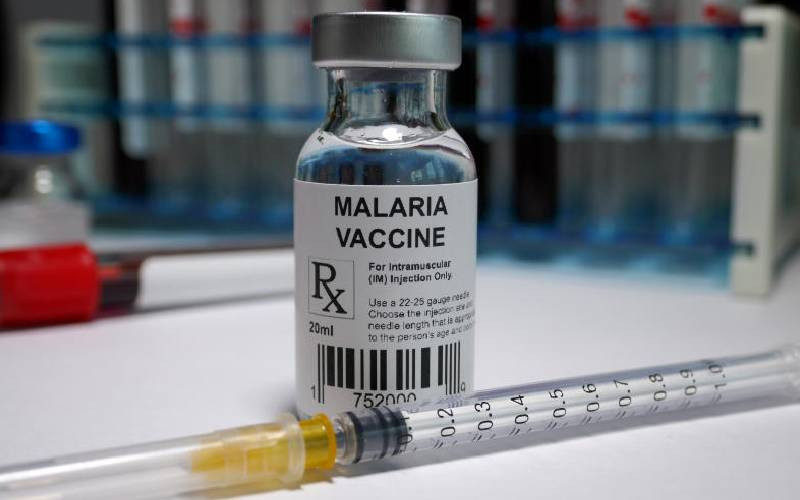
By the time she was three months old, Michelle Nabalayo had received three blood transfusions.
"My mother told me that when I was three months old, I had swollen feet and hands, frequent infections and I always appeared tired. She took me to many hospitals trying to find out what was really ailing me. Finally, she was told that I have sickle cell disease," Michelle says.
Now 19 years old, Michelle is among millions of youth who have been living with Sickle Cell Anemia (SCD) since birth.
According to the World Health Organisation, approximately 300,000 babies are born every year with severe haemoglobin disorders. Haemoglobin disorders are genetic blood diseases due to the inheritance of mutant haemoglobin genes from both, generally healthy, parents. Approximately 5 per cent of the world's population carries trait genes for haemoglobin disorders, mainly, sickle-cell disease (SCD) and thalassaemia.
According to the Centers for Disease Control (CDC), SCD is a genetic condition usually present at birth. It is inherited when a child receives two sickle cell genes, one from each parent.
In Kenya, according to Selina Ogweno of the Children Sickle Cell Foundation, the burden of SCD is increasing with an estimated 14,000 children born with the condition every year.
"Between two to four out of every 100 newborns in areas with a high burden of the sickle cell gene have sickle cell disease. It is estimated that, without appropriate intervention, 50-90 per cent of those born with the condition die before their fifth birthday," Ms Ogweno says.
- AAR slashes sickle cell test costs in accessibility drive
- Fighting pain with courage: The sickle cell anaemia warriors of Kisumu
- Kenya to benefit from new sickle cell care initiative
- Young sickle cell warrior champions care for fellow patients
Keep Reading
According to healthcare company Novartis, SCD is a global health problem, but sub-Saharan Africa bears the highest burden of the disease. There is a clear disparity between Africa and other parts of the world, where the condition is managed as a chronic disease.
"I was the first child in our family to be diagnosed with SCD. Two of my younger sisters were born later with the same condition. When I was born, my mother didn't know what SCD was. Medics prescribed drugs that were meant to silence progressive signs of this condition," Michelle narrates.
"I grew up taking those drugs every day. My mother told me that those drugs were to help me recover from my swollen feet and hands which were tormenting signs by then," Michelle recalls.
Michelle's parents took her to school but she recalls that by the time she was in primary school, she had spent more time in hospital than in school due to several admissions.
The most significant symptom was periodic episodes of extreme pain in various parts of her body but mostly the chest, back, joints, arms, and legs. These are tormenting signs that she experiences to date.
"Whenever I was admitted to hospital, I noticed that the medics indicated that I had to take a haemoglobin test. They would explain to my mother that the test was to measure the levels of haemoglobin in my blood," Michelle narrates adding that, at the time, she didn't know she had SCD.
"Mostly, I was told that my haemoglobin levels were low. To increase the levels, I had to go through blood transfusions," Michelle narrates.
According to World Health Organization (WHO), "Hemoglobin is a protein in your red blood cells that carries oxygen from your lungs to the rest of your body. If your haemoglobin levels are abnormal, it may be a sign that you have a blood disorder."
When she was 7 years old, Michelle asked her mother to explain to her more about the condition she was suffering from.
"I had always wondered why I had taking drugs every day when my friends didn't have to do that," Michelle explains.
Later on, when she was old enough to understand a concept, her mother explained more about the blood disorder she was suffering from. However, she learnt the full details through her doctor who kept visiting her now and again.
"The doctor explained to me that this condition was inherited from parents to offspring and that for now, there is proven cure. I had to just manage its signs for so I could live longer," Michelle says.
"I would go for checkups every Friday. Being away from school for one day every week made me to miss a lot. It affected my academic performance. The frequent hospital admissions didn't help either," she narrates.
In addition, SCD has caused disability to her left hand which it's not functioning to date because of the stroke she got in 2016.
According to Dr Bernard Awuonda, Consultant Pediatrician at Jaramogi Oginga Odinga Teaching and Referral Hospital (JOOTRH) SCD can cause several complications in the body tissues and organs.
In the brain, it can cause strokes. Strokes can be overt or silent. Overt strokes will present with weakness of body parts especially the limbs (hands and legs). Silent strokes are quite common. According to the expert, by age 6 years, about 30 per cent of children with SCD will have developed some silent stroke, while another 11 per cent develop overt strokes by age 20.
Michelle says that since she was diagnosed to have SCD to date, she has gone through more than 40 blood transfusions which, according to experts, is not normal for SCD victims.
According to Dr Awuonda, the many blood transfusions mean the patient's condition is poorly controlled.
"The frequent transfusions may cause the body to have iron overload. This needs to be checked and appropriate treatment is given to lower it. But the patient must be on hydroxyurea daily because this will help boost the haemoglobin levels and reduce the frequency of painful crises," he explains.
Michelle says that frequent blood transfusions are a major challenge. Apart from the difficult procedure of accessing blood transfusions, it also needs time away from normal life as for one to be transfused, a patient must be admitted for some days.
"I believe my haemoglobin level will be at the correct level soon so that I can stop being blood transfused now and again. I'm tired of walking from one facility to another to look for donated blood with matching antigens," Michelle narrates. "It is also expensive. You have to set aside money for the transfusion alongside the prophylaxis tablets that I have to take every day," she says.
Another drug Michelle has to take is hydroxyurea, which she says is one of the most expensive among her medications.
"One tablet is Sh50 and I've to take two tablets every day. In a week that's Sh700. So what about in a month? That is a lot, keeping in mind my parents are nursing three of us demanding the same attention and care," she says.
"The funny thing about SCD is that you can sleep well but the next day you don't know what's up. You can be good now but in the next few minutes, you are in a crisis. The pain is so intense, I lack words to explain it," Michelle says.
Apart from the cost of managing the disease, Michelle says stigma is also a challenge.
Frequently in school, her friends separated themselves from her, saying that she was likely to pass the disorder to them.
During school trips, her teachers would always leave her behind saying that she might fall ill on the way. In addition, her friends always questioned why she kept complaining about being unwell.
"Despite the progressive stigma, I'm now a warrior. Stigma cannot create worry for me. I am used to it," Michelle says.
 The Standard Group Plc is a multi-media organization with investments in media
platforms spanning newspaper print
operations, television, radio broadcasting, digital and online services. The
Standard Group is recognized as a
leading multi-media house in Kenya with a key influence in matters of national
and international interest.
The Standard Group Plc is a multi-media organization with investments in media
platforms spanning newspaper print
operations, television, radio broadcasting, digital and online services. The
Standard Group is recognized as a
leading multi-media house in Kenya with a key influence in matters of national
and international interest.











